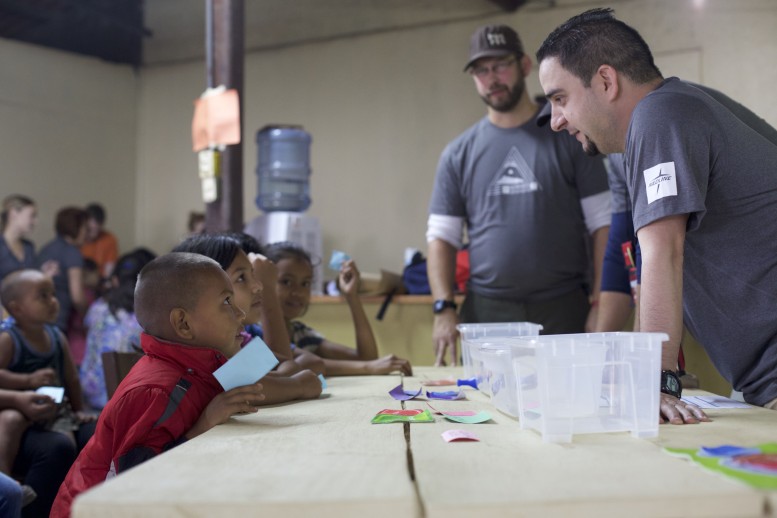Breaking Down the Science of Good Communication

By Medline Newsroom Staff | December 13, 2017
In August, 16 Medline employees from all across the country flew to El Crucero, Nicaragua, for the company’s first-ever medical service trip. Partnering with Project C.U.R.E., the Medline volunteers worked with the local community of El Crucero to deliver health education on topics like hand hygiene, first aid, nutrition and dental hygiene. Jill Vocke is a scientist at Medline’s Research & Development lab and shared her experience translating her expertise to a community struggling with a lack of clean water, leading to high rates of illness.

Jill Vocke is a scientist at Medline’s Research & Development lab.
Think of a stereotypical scientist. Likely, you’re thinking of a nerdy person who is really excitable about a very esoteric topic that bores most people. You might think of someone who has a hard time relating to others who don’t also happen to be into that same esoteric topic. At best, a scientist struggling to talk to a non-scientist causes nothing but confusion. At worst, it causes frustration and an insurmountable wall to communication and understanding. There is a very good reason this is a stereotype – it’s unfortunately often true.
Many scientists fail at one of the most basic tenants of good communication: meet your audience where they are and adapt the message. This could apply to anyone really.
Think about who your audience is.
On this trip, the audience was the children of El Crucero, Nicaragua. Our message was information on how to preserve their health with things like wise food choices and good hygiene. The challenge was how to deliver this message effectively, which includes difficult concepts not easily understood by those with extremely limited resources in a way that is effective and long lasting.
Our Medline group became fantastic scientists that defied the stereotype on this trip. We met our audience on their turf, in their community, to literally “meet them where they are”. We spoke their language. We understood our audience was impoverished and had very little to work with, so we met them where they were by teaching small ways to make a big difference.
Be adaptable.
We came in as foreigners, but quickly made friends by playing some impromptu soccer. For those of us, including me, who don’t speak fluent Spanish, we communicated non-verbally with pantomime or simple affection. The clinic didn’t have some features we took for granted, like running water, so we adapted the hygiene lessons. When we unexpectedly had groups of younger or older kids, we tailored our approach to meet their maturity level. When we unexpectedly got news a local orphanage was happy to welcome us, we packed up everything and took the show on the road for a completely different audience and facility.
Consider the significance.
For us, an antibacterial bandage is so common that it’s hardly worth thinking about. To these children, an antibacterial bandage is significant, and the knowledge of how to use it may be the only thing preventing a minor wound infection from spiraling out of control into septicemia, a type of blood poisoning. These children were a great audience, especially for a scientist working toward better communication.
Medline Newsroom Staff
Medline Newsroom Staff
Medline's newsroom staff researches and reports on the latest news and trends in healthcare.
